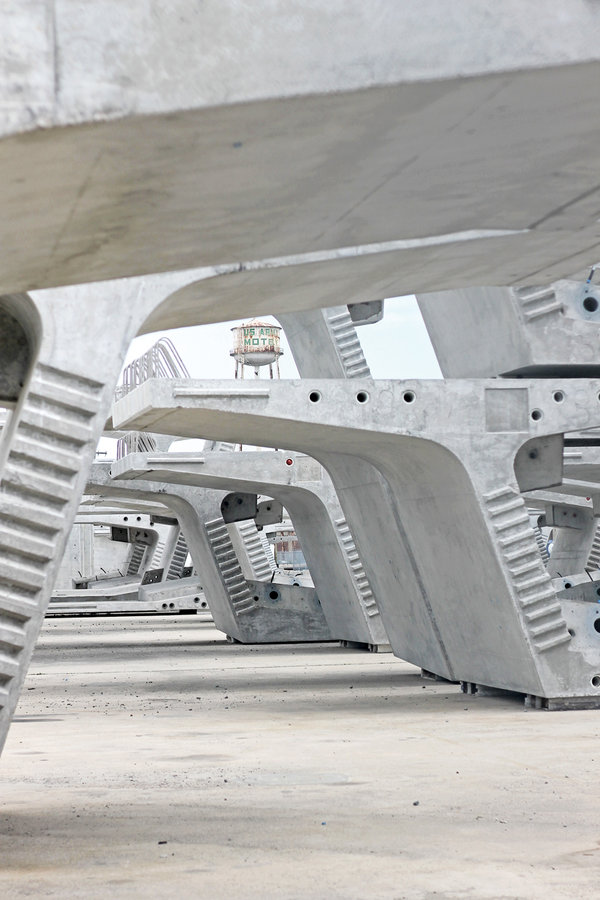Many people know that, historically, the Bayonne Bridge is one of only two steel bridges of its kind in the world; it has a sister bridge in Sydney, Australia.
But few people know that both bridges were constructed at the same time, and as sister bridges, they were both scheduled to coordinate their grand openings.
In fact, a pair of golden scissors was made to cut the ribbon for the Bayonne Bridge and then be flown to Australia for its ribbon-cutting. Afterward, one half of the scissors would be kept in Australia as a memento. The other half would be flown back to the New York area.
But after the ribbon-cutting ceremony in Bayonne in 1931, only half the golden scissors arrived in Australia, so the ribbon was cut with reconstructed scissors, half from the original golden pair, half with a new scissor of steel.
In anticipation of the newly reconstructed Bayonne Bridge, officials from the Port Authority of New York and New Jersey have been scrambling to find both halves of the original golden pair.
The search for the American half may well be in vain, especially if the piece had been stored in the World Trade Center with other historical artifacts, all of which were lost when the towers collapsed on Sept. 11, 2001.
Pieces of a New Bridge
The rebuilding of the Bayonne Bridge is filled with interesting details. Many of the pieces for the new bridge, for example, are being stored on the former Military Ocean Terminal, creating an eerie science-fiction-like landscape.
The MOTBY was one of several triage centers set up in the hours after the attack on 9/11, and these pieces are within walking distance of the city’s tribute to those who lost their lives on that day.
These parts are also adjacent to the former studio space for Steven Spielberg’s War of the Worlds, which depicted the destruction of the bridge and was his own homage to the victims of the attack.
Strolling around where the new pieces of the bridge wait for their transport to the bridge construction site, I feel like I’m in a dream, an alien world filled with iconic images of Bayonne’s past and future. Poking up from the ground is the U.S. Army water tank that still bears the original name from when this area served as a military base. While the barracks, train station, and other buildings have long been demolished, many of the original bomb-proof storage structures remain.
The Bayonne Bridge, since its opening in November 1931, has become a symbol of the city. Construction started on the original bridge in the mid-1920s and coincided with the construction of the Empire State Building. Both were considered engineering marvels of their time.
The opening was such a big deal that President-elect Franklin Delano Roosevelt (then governor of New York) came to Bayonne via motorcade to help cut the ribbon.
The bridge opened for business on Nov. 15, 1931, and saw more than 7,000 cars cross between Bayonne and Staten Island on the first day. The first vehicle to cross was a Rolls-Royce owned by then Bayonne Mayor Dr. Lucius F. Donohue.
But with the collapse of the Stock Market in 1929 and the subsequent Great Depression, the bridge didn’t reach its economic potential until the close of World War II. The heyday for the Bayonne Bridge came in the mid-1960s, when New York completed the Verrazano-Narrows Bridge, allowing an alternative route to Brooklyn from Staten Island and New Jersey.
Raising the Bridge
The reconstruction of the Bayonne Bridge today has global significance. For most of America’s history, New York has been a significant harbor, bringing in trade from around the world. Cargo docks lined both sides of the Hudson River from Weehawken to Bayonne, and along the West Side of New York City, as well as both sides of the East River in Brooklyn and Manhattan. Thomas Hurley, who played the boy on the rooftop with Marlon Brando in the classic film On the Waterfront, was born and raised in Hoboken but moved to Bayonne when Hoboken “stopped being Hoboken,” working in nearby Global Terminals until a few years ago.
Most of the cargo ports are along Newark Bay, requiring ships to pass under the Bayonne Bridge to reach them. But new, larger cargo ships can’t pass under the bridge despite extensive dredging, so the Port Authority must raise the bridge.
Each piece stored at the MOTBY is like a piece of a large jigsaw puzzle which, when completed, will give a clearer vision of the future, not just for Bayonne, but for the entire region.—BLP
